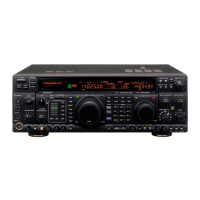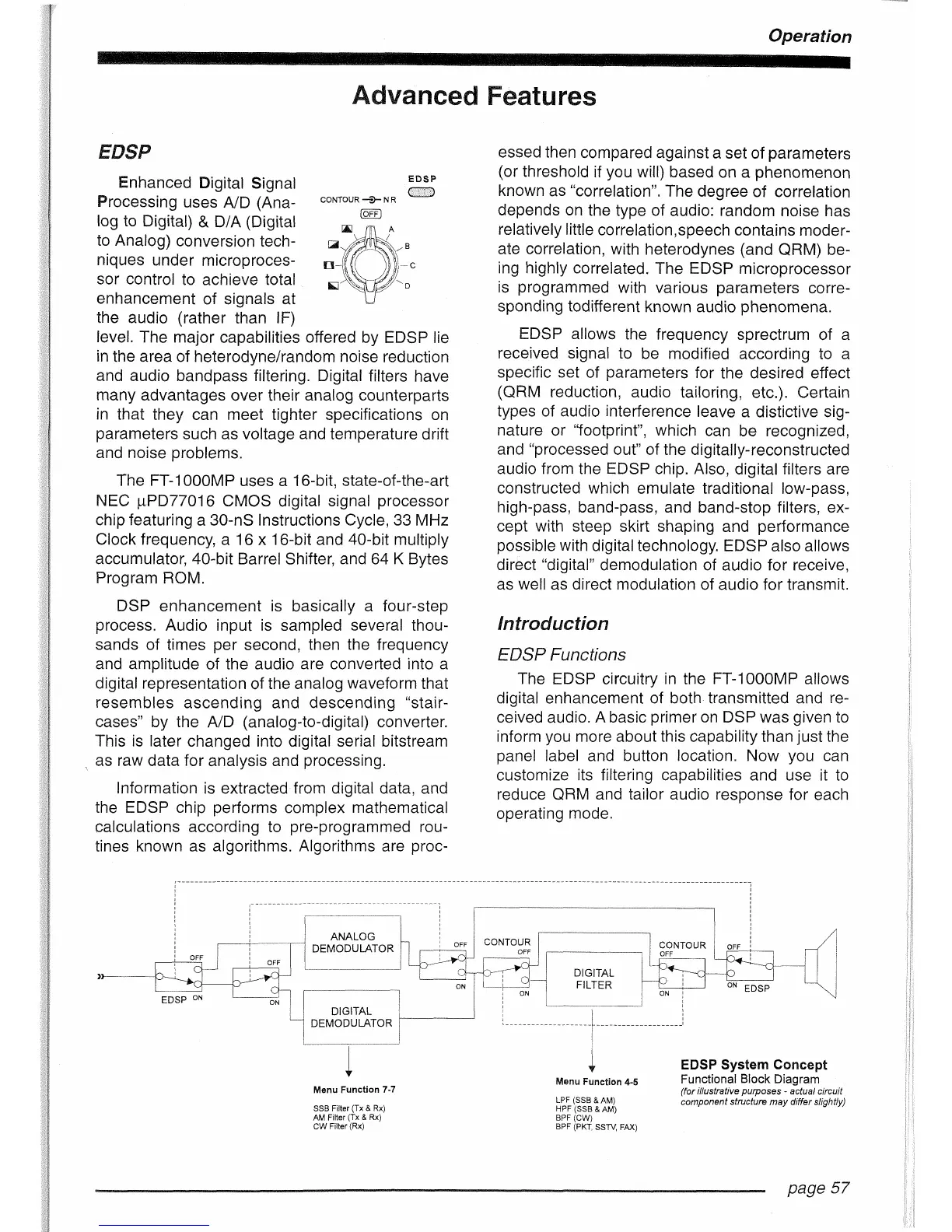Operation
Advanced
Features
essed then compared against a set of parameters
Enhanced Digital Signal
EDSP
C
Processing uses AID (Ana-
log to Digital)
&
DIA (Digital
[OFF]
to Analog) conversion tech-
i3
niques under microproces- -C
sor control to achieve total
D
enhancement of signals at
the audio (rather than IF)
level. The major capabilities offered by EDSP lie
in the area of
heterodynelrandom noise reduction
and audio
bandpass filtering. Digital filters have
many advantages over their analog counterparts
in that they can meet tighter specifications on
parameters such as voltage and temperature drift
and noise problems.
(or threshold if you will) based on a phenomenon
known as "correlation". The degree of correlation
depends on the type of audio: random noise has
relatively little
correlation,speech contains moder-
ate correlation, with heterodynes (and QRM) be-
ing highly correlated. The EDSP microprocessor
is programmed with various parameters corre-
sponding todifferent known audio phenomena.
EDSP allows the frequency sprectrum of a
received signal to be modified according to a
specific set of parameters for the desired effect
(QRM reduction, audio tailoring, etc.). Certain
types of audio interference leave a distictive sig-
nature or "footprint", which can be recognized,
and "processed out" of the digitally-reconstructed
audio from the EDSP chip. Also, digital filters are
The FT-l
OooMP
uses
a
6-bit, state-of-the-art
constructed which emulate traditional low-pass,
NEC pPD77016 CMOS digital signal processor
high-pass, band-pass, and band-stop filters,
ex-
chip featuring a 30-nS
instructions
Cycle1 33 MHz
cept with steep skirt shaping and performance
Clock frequency, a 16 x 16-bit and 40-bit multiply
possible with digital technology. EDSP also allows
accumulator, 40-bit Barrel
Shifter, and 64
K
Bytes
direct "digital" demodulation of audio for receive,
Program
ROM.
as well as direct modulation of audio for transmit.
DSP enhancement is basically a four-step
process. Audio input is sampled several
thou-
!n
frodue fbn
sands of times per second, then the frequency
and amplitude of the audio are converted into a
digital representation of the analog waveform that
resembles ascending and descending "stair-
cases" by the
AID (analog-to-digital) converter.
This is later changed into digital serial bitstream
,
as raw data for analysis and processing.
Information is extracted from digital data, and
the EDSP chip performs complex mathematical
calculations according to pre-programmed rou-
tines known as algorithms. Algorithms are
proc-
EDSP
Functions
The EDSP circuitry in the FT-1000MP allows
digital enhancement of both transmitted and re-
ceived audio. A basic primer on DSP was given to
inform you more about this capability than just the
panel label and button location. Now you can
customize its filtering capabilities and use it to
reduce QRM and tailor audio response for each
operating mode.
6
Menu Function
7-7
SSB
Filter
(Tx
&
Rx)
AM
Filter
(Tx
&
Rx)
CW
Filter
(Rx)
EDSP System Concept
Menu Function
4-5
Functional
Block
Diagram
(for illustrative purposes
-
actual circuit
LPF (SSB
&AM)
component structure may differ slightly)
HPF (SSB
&AM)
BPF
(CW)
BPF
(PKT.
SSTV,
FAX)
page
57

